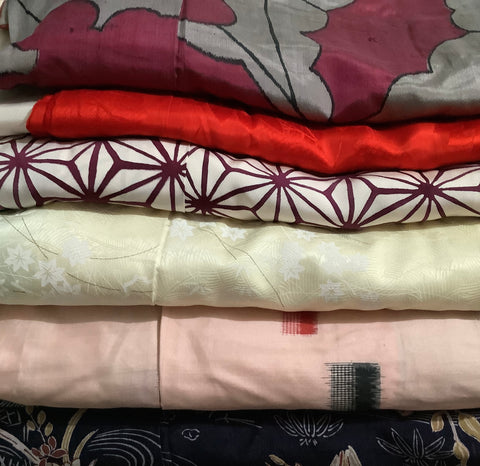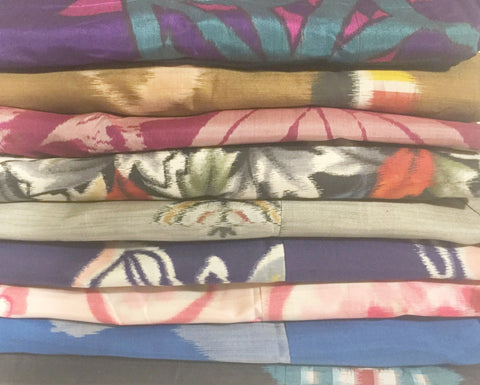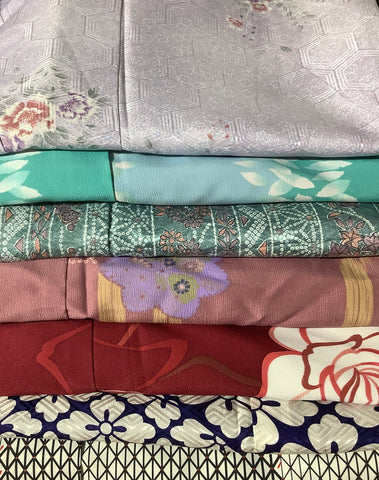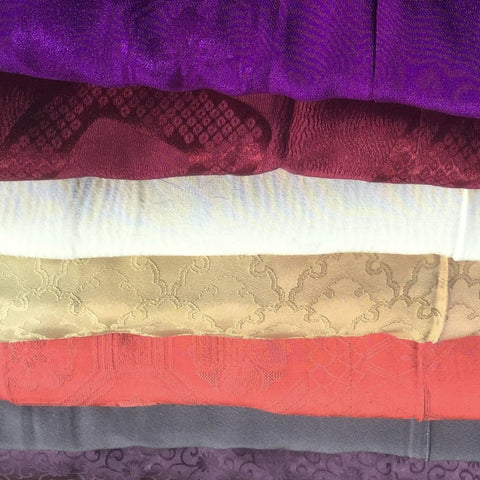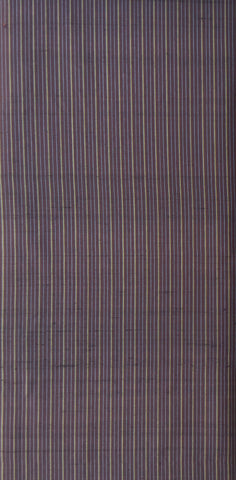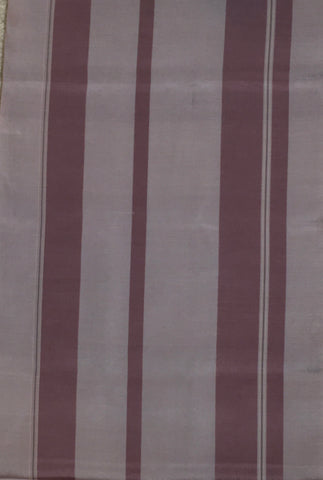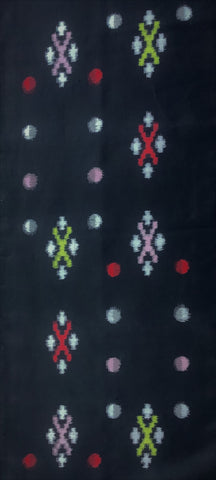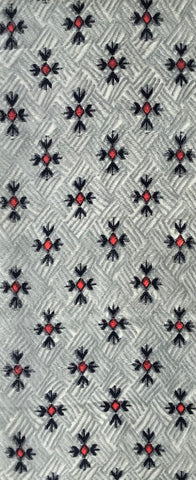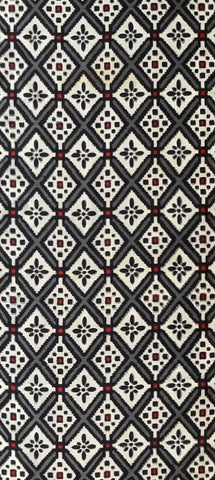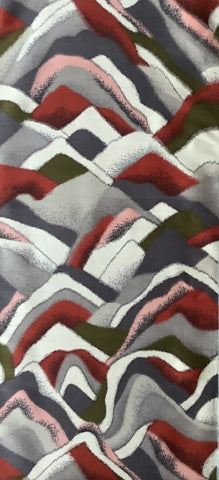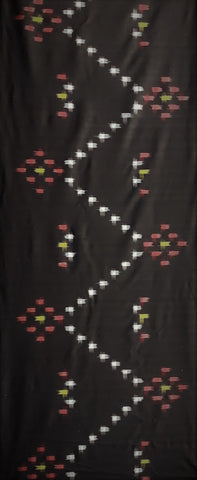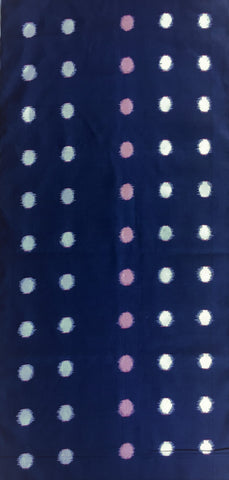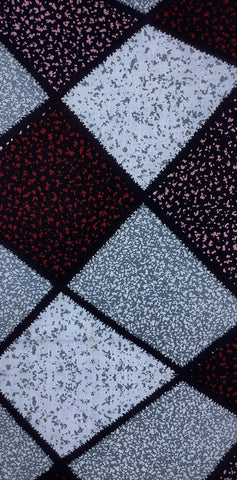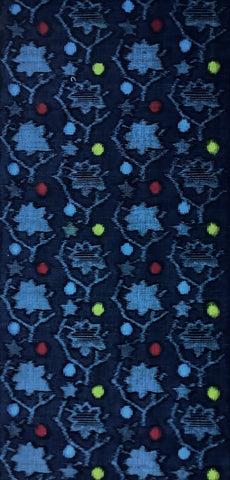7811:1960s Mud-Dyed Japanese Silk Doro-Ohshima Tsumugi, 58in. AraiHari Medallions
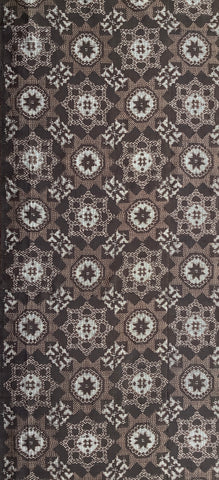
Catalog# 7811
1960s Rare Japanese Textiles:
Doro (Mud-dyed) Ohshima Tsumugi
(pongee) Silk Fabric
Medallions Grid, Pixelated, Geometrics
Width: 14.25 inches / 36.2 cm
Length: 58 inches / 147.32 cm
US$24.00 per piece
Plus Shipping

Item Details and Description
Fabric Description Details:
This thin, lightweight piece is a complex geometric medallion grid pattern type of arrangement using very dark-brown, lighter & medium tone browns, as well as off-white (appears as gray from a distance); fabric is translucent and a bit stiff; (please see our closeups; motif is intricate diagonally oriented arrangement of medallon-like elements, with predominant star and starburst patterns.
In these older mud-Ohshima fabrics, note how the motifs are rendered by the pixelated fields throughout all the various geometric and medallion-like patterns, this pixelation is common in Tsumugi due to the weaving methods, but the lighter fabric shows the pixelation a bit more (please see closeups);
The fabric is the same on both sides; no selvedge on both sides; Kimonos made from Doro-Ohshima Tsumugi are held in high regard among kimono traditionalists in Japan, given that the Imperial family has been known to wear such fabric in Royal kimonos.
Colors: Please use our text color descriptions to complement your sense of the fabric due to differences in contrast and color on different devices.
BACKGROUND JAPANESE TEXTILES CULTURAL NOTES:
There are various types of older Ohshima Tsumugi silk that involve tsumugi using mud, indigo, and grass or plants in the dyeing process.
To learn about the older Ohshima textiles, there are details on that aspect of Japan's special pongee silk-making process which can be found on the National Foundation for Promoting the National Costume of Japan website. The site explains the natural plant dyes and mud etc. used in making older (1960s and earlier) Ohshima Tsumugi silks, quoted here:
5663: 1960's Japanese Silk Piece, Deadstock, kimono fabric, stripes
Regular price $ 10.00 Sale price $ 5.00
6281: 1930s-1950's Japanese Silk Kimono Fabric, 58in.(Arai Hari)
Regular price $ 15.00 Sale price $ 7.50
6603: 1930s-50s Japanese Meisen Mock-Kasuri Silk 58 in.Piece(AraiHari)
Regular price $ 20.00 Sale price $ 10.00
6671: 1930s-50s Japanese Meisen Silk 42 in. Piece(AraiHari)
Regular price $ 15.00 Sale price $ 7.50
6775: 1930s-50s Japanese Meisen Silk 59 in. Piece (AraiHari)
Regular price $ 20.00 Sale price $ 10.00
6789: 1960's Japanese Shibori Obiage Silk by-yard(Stretches)
Regular price $ 15.00 Sale price $ 7.50
6793: 1930s-50s Deadstock Japanese Meisen Silk Fabric, Abstract,Yard
Regular price $ 20.00 Sale price $ 10.00
6923: 1930s-50s Deadstock Japanese Meisen Silk Fabric, 1 Yard
Regular price $ 20.00 Sale price $ 10.00
6978:1930s-50s Japanese Meisen Silk 59 in. Piece(AraiHari)
Regular price $ 18.00 Sale price $ 9.00
7012: 1970s Japanese Cotton Fabric, 47in. Piece(AraiHari)Abstract
Regular price $ 12.00 Sale price $ 6.00
7016:1960s Japanese E-Gasuri (ikat) Cotton Fabric, 57in.Piece(Arai-Hari)
Regular price $ 20.00 Sale price $ 10.00




